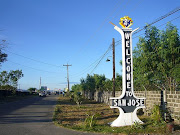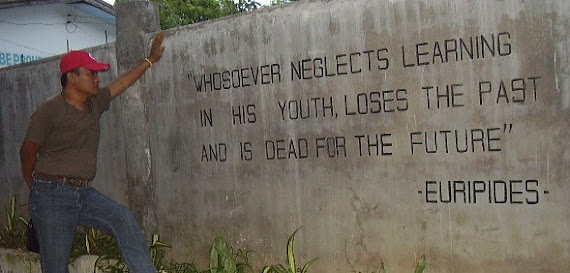The photo above shows my aunts (L to R) Rosita (Ylagan), Ligaya (Jimenez), and Helen (Paglicawan), the only surviving among the ten children of Pantaleon Salarda Novio and Roberta San Diego Delos Santos. As we celebrate Grand Parents’ Day today, September 12, allow me to share with you a story about my grandparents, the origin of all the Novios in Pandurucan (now San Jose, Occidental Mindoro), and in the whole province.
As early as 1906, the Philippine Bureau of Health established its Malaria Control Division. He conducted research, study, history, and epidemiology of malaria in the Philippines, including control practices such as annual spraying of all houses in areas affected by malaria. Malaria is a protozoan disease, and the word “malaria” means “bad air” in Italian, reflecting an old view and misconception that malaria is caused by gases from swampy regions where the anopheles mosquito, the carrier, usually dwell. Papang was the medical technician of the Malaria Eradication Unit in southern Mindoro and the team leader of the unit’s spray men.
Even before WW2, my grandfather was sent by the government to Mindoro from far-away Sta. Maria, Bulacan to be part of the malaria control team. The group was composed of doctors, paramedics, health workers, and insecticide spray men from all over Mindoro and the Philippines. He was born in Tolosa (or was it Baybay?), Leyte, on July 27, 1903.
Though stationed at the San Jose Sugar Central, they went to remote areas, including sugarcane plantations believed to be infested by malaria and breeding place for the dreaded mosquito. According to Papang’s account then, hundreds and thousands of residents, employees and sacadas (sugar cane workers) suffered and died from the disease. No less than ten people die every day because of malaria and other related conditions, including cholera.
The old folks I met today could still recognize my grandfather, for he helped
them treat the disease. Without the malaria-carrying mosquitos, we could have
been in Leyte with the Romualdezes or maybe in Davao with the Dutertes!
On the other hand, our Mamang was a typical Filipina wife born
on June 7, 1913. Good at cooking sinigang
na bangus sa hinog na bayabas, ginataang dahoon ng gabi na may kuhol, inihaw na baboy, minatamis na calumpit, papaet and
dinuguan to mention a few dalicacies,
at times strict but loving, and very prayerful. She swigs siyoktong and chews mascada but was a very religious woman of both physical and spiritual strength. During the
war, Mamang and several other ladies
of Central worked as laundrywomen for the GIs belonging to the 503rd Parachute
Infantry Regiment. And since they transferred from Central to the main town of
San Jose in the early 50s, they were involved in various religious
organizations such as the Cursillo Movement, the Apostolada ng Panalangin, and the Holy Name Society. They recite
the rosary every night, and her very intention always centers on overcoming the
difficulties their children are in that particular time. They are devoted
churchgoers hearing the masses of the town’s parish priests from Fr. Carlos
Brendel, SVD, to Fr. Ramon Del Rosario, SVD.
Responding to the dreaded epidemic, the American government launched the
Six-Year (1953-1958) Philippine-American Program for Malaria Control in the
Philippines and my grandfather became part of it. Aside from giving
anti-malaria drugs as an additional relief measure, they sprayed practically
every house, from San Jose to Rizal, for at least three consecutive years. And
after that, another spot-spraying of homes as conditions demand. They used dichlorodiphenyltrichloroethane or
DDT. DDT is a potent insecticide rediscovered in 1939 by Paul Muller of
Switzerland but banned in the United States in 1972. The Philippines had banned
DDT entirely only in 1994 due to the harmful effects of DDT.
I grew up in the smell of DDT and Chloroquine and playing with test tubes and microscope glass slides, including the taste of oatmeal from the United States Agency for International Development or USAID.
Not unlike other infectious
diseases like COVID-19, malaria can be traced or rooted in various factors. The
mosquito, the virus, or the medical dimension only takes the supporting (or is it "character"?) role. It has a social, cultural, and political aspect to its
resolution for the world to return to normal.
The calculated response of the government and its entities, especially the health department, must be the core of every plan and action toward adequate or suitable surveillance and treatment strategies. If those basic things worked for malaria before, why cannot work in COVID-19 today? But of course, this goes with the praying of Oratio Imperata or other spiritual supplications. Along with spraying alcohol and disinfectants.
My grandparents "infected" me with this implicit advice: pray for and spray excellent seeds in whatever and wherever soil you are planted.







No comments:
Post a Comment